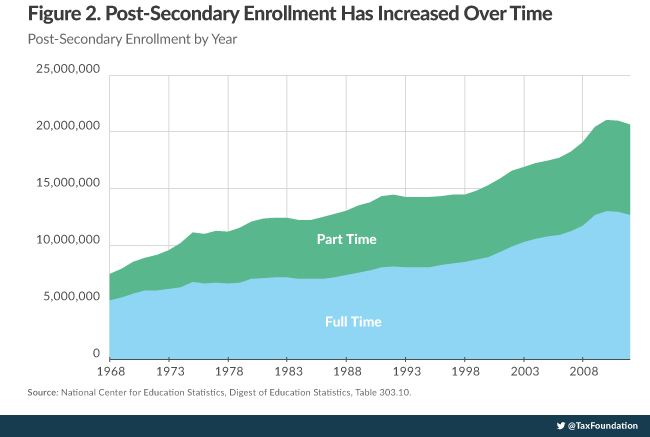College is generally a good investment. On average, people who earn a four year degree go on to make almost twice as much as those with only a high school diploma. But while those future high earners are in college, they tend to be relatively poor (speaking from experience here).
The relative poverty of college students has some big implications for how we look at inequality. We recently released a new report that takes a new look at the use of household income data and it’s implications for inequality.
Incomes are Low in College Towns
College towns are often home to the lowest-income places in the United States (table below).
The Fifteen Lowest-Income Places in the United States |
||||
|
Census Place |
Number of Households |
Median Household Income (2012 Dollars) |
Mean Household Income (2012 Dollars) |
Higher Education |
|
Boone, North Carolina |
6221 |
$16,447 |
$33,173 |
Appalachian State University |
|
Carbondale, Illinois |
9601 |
17743 |
36495 |
Southern Illinois University |
|
Athens, Ohio |
6497 |
18428 |
41163 |
Ohio University |
|
East St. Louis, Illinois |
10612 |
19278 |
27732 |
|
|
Statesboro, Georgia |
9850 |
20751 |
32586 |
Georgia Southern University |
|
Opa-locka, Florida |
5163 |
20757 |
30512 |
|
|
East Cleveland, Ohio |
8074 |
20797 |
29280 |
|
|
Opelousas, Louisiana |
6110 |
20983 |
33058 |
|
|
University CDP (Hillsborough County), Florida |
16657 |
20992 |
28893 |
University of South Florida |
|
Selma, Alabama |
7812 |
22076 |
40092 |
|
|
Milledgeville, Georgia |
5839 |
23580 |
39824 |
Central Georgia Technical College, Georgia College, Georgia Military College |
|
Prichard, Alabama |
8714 |
23726 |
32582 |
|
|
State College, Pennsylvania |
12178 |
24104 |
45138 |
Pennsylvania State University |
|
Pullman, Washington |
10151 |
24125 |
47808 |
Washington State University |
|
Oxford, Ohio |
5730 |
24211 |
49458 |
Miami University |
|
Source: U.S. Census Bureau, American Community Survey (Selected Economic Characteristics, 5-year Estimates). Note: minimum 5,000 households. |
According to U.S. Census Bureau data, Hillsborough County, Florida (the home of the University of South Florida) has a median income of just over $20,000 a year. It would be very easy for the common observer to assume that the residents of Hillsborough County have a relatively low quality of life, when in fact they have a bright future.
One example: If you observed the tax data for surgeons, you would find very high degrees of inequality. Through their twenties, surgeons are in medical school and earning very little. Whereas, in their prime, with a proven track record and solid experience, they can earn $400,000 or more.
Economists and social scientists often consider low incomes as a sign of a lack of opportunity. Although that is sometimes very true, the opportunity costs of the situation must also be taken into account. Economist Alan Cole writes:
“A reasonable person would not say a construction worker is clearly better off than a business school student. And yet, it is the latter who benefits from progressive income taxes and refundable tax credits at the expense of the former. Use data unreasonably and you will get unreasonable results.”
The Growth in College Enrollment
Not only do post-secondary students predictably skew overall income data, they do it at an accelerating rate. Over 20 million students are currently enrolled in post-secondary education.
Since the late 1970s, we have seen post-secondary enrollment nearly double, from just over 10 million students to over 20 million students today.
This growth in post-secondary enrollment must certainly be considered in any discussion of changes in inequality.
To read the full report: click here
Share this article